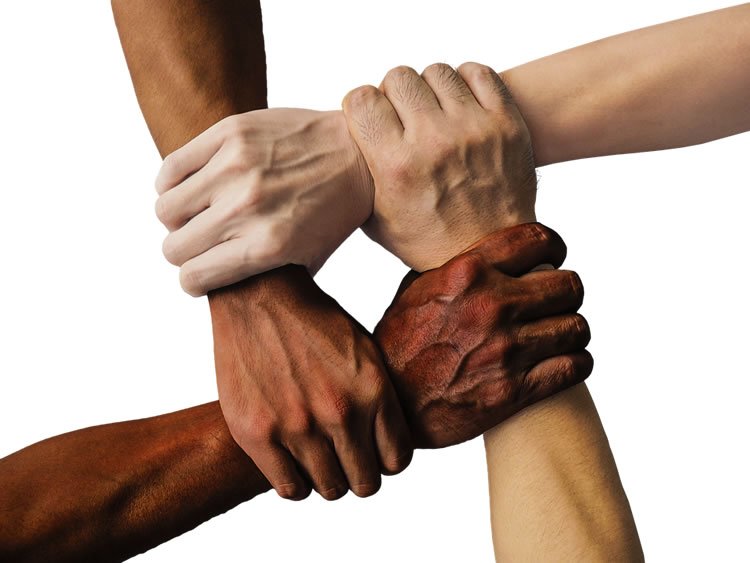Summary: A new study reveals the role the somatosensory cortex plays in prosocial behavior.
Source: Netherlands Institute for Neuroscience, KNAW.
Helping other people in need is a foundation of our society. It is intuitive to believe that we help others because we empathically share their pain. Neuroscience shows that when we see somebody in pain our brain activates tactile and emotional regions as if we ourselves were in pain. A study from Selene Gallo investigated whether altering activity in these tactile brain regions while witnessing the pain of others would alter people’s willingness to help. The results, published on 08 May 2018 in eLife, are of great importance to understand our social human nature and to find treatments for pathologies, like psychopath individuals.
To answer the question, researchers from the Social Brain Lab, led by Valeria Gazzola and Christian Keysers (Netherlands Institute for Neuroscience, KNAW), gave participants the opportunity to reduce the pain of a victim receiving a swat on her hand. They could reduce the pain by giving up money they could have otherwise taken home while their tactile brain activity was measured and altered.
The researchers used electroencephalography, a method to record electrical activity of the brain, in healthy human participants. With this method, they found that the activity in tactile cortices increased when participants increased their donation. Later they altered brain activity by using neuromodulation. Normally participants gave more money when the victim experienced more pain. But when interfering with tactile activity two related phenomena were observed: (a) people became less able to perceive in how much pain the other person was and (b) they no longer adapted their donations as appropriately to the needs of the other.
An important social function for the tactile cortices
The results suggest that our tactile cortices, primarily evolved to perceive touch and pain on our body, have an important social function. They contribute to prosocial decision-making by helping to transform the sight of bodily harm into an accurate feeling for how much pain the victim experiences. This feeling is necessary to adapt our helping to the needs of others.

Providing a link between empathy for pain and prosocial behavior at the neural level is crucial to understand our social human nature and target pharmacological approaches to treat pathologies in which these mechanisms dysfunction, for example in psychopath individual or in children with callous unemotional traits.
Source: Selene Gallo – Netherlands Institute for Neuroscience, KNAW
Publisher: Organized by NeuroscienceNews.com.
Image Source: NeuroscienceNews.com image is in the public domain.
Original Research: Abstract for “The causal role of the somatosensory cortex in prosocial behaviour” by Selene Gallo, Riccardo Paracampo, Laura Müller-Pinzler, Mario Carlo Severo, Laila Blömer, Carolina Fernandes-Henriques, Anna Henschel, Balint Kalista Lammes, Tatjana Maskaljunas, Judith Suttrup, Alessio Avenanti, Christian Keysers, Valeria Gazzola in eLife. Published May 8 2018.
doi:10.7554/eLife.32740
[cbtabs][cbtab title=”MLA”]Netherlands Institute for Neuroscience, KNAW “The Neuroscience of Prosocial Behavior.” NeuroscienceNews. NeuroscienceNews, 25 May 2018.
<https://neurosciencenews.com/neuroscience-prosocial-behavior-9143/>.[/cbtab][cbtab title=”APA”]Netherlands Institute for Neuroscience, KNAW (2018, May 25). The Neuroscience of Prosocial Behavior. NeuroscienceNews. Retrieved May 25, 2018 from https://neurosciencenews.com/neuroscience-prosocial-behavior-9143/[/cbtab][cbtab title=”Chicago”]Netherlands Institute for Neuroscience, KNAW “The Neuroscience of Prosocial Behavior.” https://neurosciencenews.com/neuroscience-prosocial-behavior-9143/ (accessed May 25, 2018).[/cbtab][/cbtabs]
Abstract
The causal role of the somatosensory cortex in prosocial behaviour
Witnessing another person’s suffering elicits vicarious brain activity in areas active when we ourselves are in pain. Whether this activity influences prosocial behavior remains debated. Here participants witnessed a confederate express pain via a reaction of the swatted hand or via a facial expression and could decide to reduce that pain by donating money. Participants donate more money on trials in which the confederate expressed more pain. EEG shows that activity of the SI hand region explains variance in donation; TMS shows that altering this activity interferes with the pain-donation coupling only when pain is expressed by the hand and HD-tDCS that altering SI activity also interferes with pain perception. These experiments show vicarious somatosensory activations contribute to prosocial decision-making and suggest they do so by helping transform observed reactions of affected body-parts into accurate perceptions of pain that are necessary for decision making.







